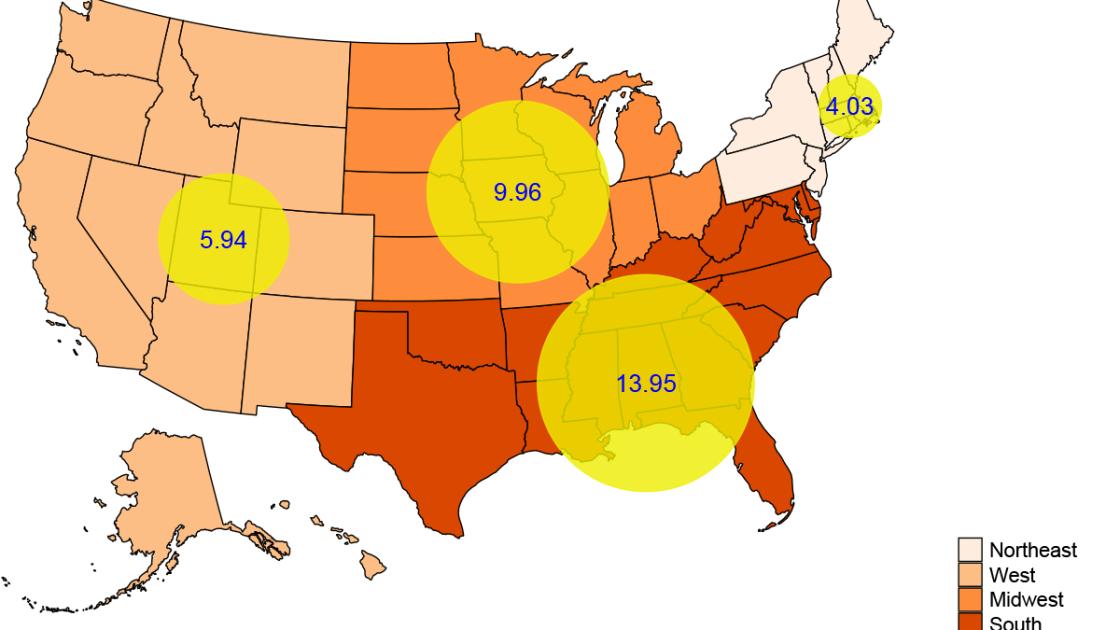
New study shows toll of firearm injury on U.S. children
Map caption: Geographic distribution of pediatric firearm injury-associated emergency department visits per 100,000 population in the U.S. (data derived from NEDS 2019). A darker red color and a larger circle represent a higher number of FIs per 100,000 population. Source: thelancet.com
SPRINGFIELD, IL - Since 2020, firearm injuries have become the No. 1 cause of death in American children, according to the United States Centers for Disease Control and Prevention. Compared to similar countries, the U.S. is the only country in which firearm injury is the leading cause of death among children and teens.
This sobering fact prompted Southern Illinois University School of Medicine hematologist-oncologist Ruchika Goel, MD, and colleagues at Johns Hopkins University School of Medicine to study national data on more than 7,000 emergency room visits and 2,800 hospitalizations to learn more about the children and adolescents affected, as well as the burden on the nation’s hospitals and health care providers. The research was published in the May issue of The Lancet Regional Health - Americas.
The investigators found evidence that children from lower-income households and Black children are disproportionately impacted by gunfire resulting from assaults and accidents, while white children have the highest proportion of self-inflicted injuries. Between 5-8 percent of the children died in the emergency room or during the hospitalization. Self-inflicted gunshot injuries were more often fatal as compared to other firearm injury types.
injury types.
“Firearm injury is a major public health challenge in the United States. Our study demonstrates the extent that firearm injuries and deaths and racial and socioeconomic disparities continue to contribute to an alarming health crisis,” said Dr. Goel, lead author of the study and also an adjunct faculty at Johns Hopkins University School of Medicine.
“The medical and social impact of firearm injuries on children and adolescents is profound, conferring long-lasting physical and mental disabilities that require intense medical interventions,” Goel said. “It should be considered a national public health emergency.”
“There needs to be more public health education and legal policy interventions to curb these tragic outcomes,” said Aaron Tobian, MD, PhD, physician and director of the Transfusion Medicine Division at Johns Hopkins University School of Medicine and senior author of the study.
Read the full article at thelancet.com.
Dr. Goel is available to speak to the media.



